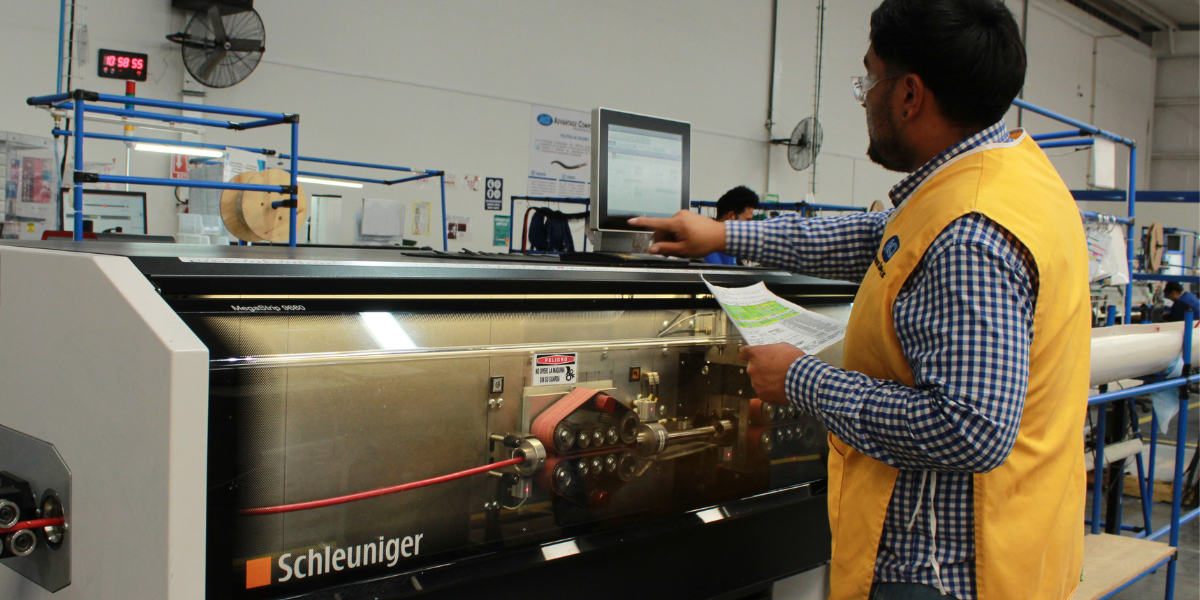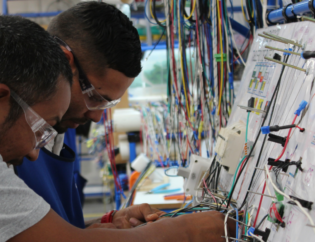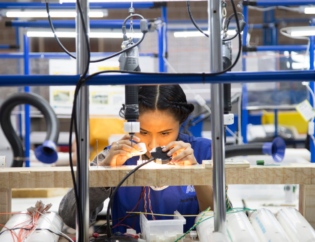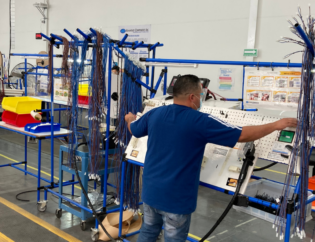
Wiring a Better Future The Role of Wire Harness Manufacturers
When it comes to envisioning the future of technology, one might think of cutting-edge gadgets, artificial intelligence, or space exploration. However, there is one crucial element that often goes overlooked: wiring.
The role of wire harness manufacturers in creating a better future cannot be understated. From powering advanced aerospace systems to supporting the development of electric vehicles, wire harnesses and their associated systems play a vital role in shaping the technology of tomorrow.
In this blog post, we will go over the importance of wire harness manufacturers and their contributions to building a better future.
A Brief History of Wire Harnesses
Wire harnesses have a long history dating back to the early 1900s. It was during the 1920s that they began to be widely used in the automotive industry as engineers discovered that binding wires and cables into a harness allowed them to be better secured against the adverse effects of vibrations, abrasions, and moisture.
The harness was a systematic and integrated arrangement of cables within an insulated material. Since then, such harnesses have been used in a variety of industries and applications. The aerospace industry, for instance, uses them to power its systems, while in the healthcare industry they are used in electronic medical equipment.
As technology has advanced, these devices have become increasingly sophisticated, incorporating new materials and manufacturing techniques to meet the demands of modern applications.
Also Read- A Look at Custom Molded Harsh Environment Cable Assembly
The Importance of Wire Harnesses in Modern Technology
Wire harnesses are widely used in a variety of industries, such as aerospace, automotive, medical, and industrial applications. Examples of wire harness applications include airplane control systems, vehicle engine management systems, and medical equipment.
The benefits of using them include improved organization and management of cables, reduced risk of damage from vibration, abrasion, or moisture, and increased efficiency and reliability of the electronic system.
Examples of harnesses in use: Some common examples include automotive wiring harnesses, which connect electrical systems in cars, trucks, and other vehicles. Wire harnesses are also used in the aerospace industry to connect various systems in aircraft, such as avionics, lighting, and control systems. Additionally, they are used in medical equipment, electronics, and appliances to ensure proper connectivity and efficient production processes.
Benefits of using: Using wire harnesses offers several benefits, including reducing the risk of short circuits, improving signal quality and system reliability, and simplifying assembly processes. They also help reduce overall production costs by minimizing the number of individual components required and reducing the time and labor required for assembly. Additionally, they are more durable than loose wires and cables and provide better protection against environmental factors such as abrasion, moisture, and vibrations.
The Role of Wire Harness Manufacturers in Creating a Better Future
Wire harness manufacturers play a crucial role in the creation of a better future by designing and producing such components, which power the modern technology we rely on every day.
Overview of Wire Harness Manufacturers’ Responsibilities
Wire harness manufacturers are responsible for designing, testing, and producing harnesses that connect various electrical and electronic components within a system. This involves working closely with engineers to ensure that the harnesses meet the necessary performance specifications and safety standards. Additionally, manufacturers must also focus on reducing the cycle time and cost of the design process by utilizing advanced automation capabilities.
Impact of Wire Harnesses on Technological Advancements
Wire harnesses have a significant impact on technological advancements, particularly in the automotive and aerospace industries. In the automotive industry, the increasing complexity of electrical and electronic systems has made the design and production of their production more challenging.
However, advances in wire harness technology have also enabled the development of new features such as electric and hybrid powertrains, advanced driver assistance systems, and connected vehicle technologies. Similarly, in the aerospace industry, these components play a critical role in powering the complex systems that enable modern aircraft to operate safely and efficiently.
Examples of Innovative Wire Harness Designs
Innovative designs are continually being developed to meet the demands of modern technology. For example, some manufacturers are exploring the use of artificial intelligence to automate the design process and improve efficiency.
Additionally, new materials, such as high-performance polymers, are being used to create lighter, more durable wire harnesses that can withstand extreme environments. Overall, wire harness manufacturers are continually innovating to create better solutions that power the technology of the future.
Challenges in Wire Harness Manufacturing
Manufacturing is a critical aspect of modern transportation, and it is not without its challenges.
Cost considerations
The wire harness industry has long been a low-margin business, and OEMs are always looking to reduce their manufacturing expenses. Wire harness manufacturers are under constant cost and price pressure from OEMs. Additionally, material shortages resulting from supply chain disruptions since the beginning of the Covid-19 pandemic are driving up the costs of production.
Quality control issues
Manufacturers of harnesses must account for the countless configurations involved. These intricate systems must be manufactured with precision while adhering to strict timelines, quality standards, and cost and weight constraints.
Environmental concerns
Multiple industries have been under increasing pressure to reduce their environmental footprint, and this sector is no exception. The production of wire harnesses requires a significant amount of energy and materials, and manufacturers must find ways to minimize waste and reduce their carbon footprint. One way to address these environmental concerns is by utilizing environmentally friendly materials like recycled plastics.
Revisiting Key Points and Final Thoughts
Explanation of wire harnesses:
- Systematic and integrated arrangements of cables and wires within an insulated material.
- Purpose: to transmit signals or electrical power between different components or systems.
Examples of wire harnesses in use:
- Automotive wiring harnesses: connect electrical systems in cars, trucks, and other vehicles.
- Aerospace industry: connect various systems in aircraft, such as avionics, lighting, and control systems.
- Medical equipment, electronics, and appliances: ensure proper connectivity and efficient production processes.
Benefits of using wire harnesses:
- Reducing the risk of short circuits.
- Improving signal quality and system reliability.
- Simplifying assembly processes.
- Reducing overall production costs.
- Providing better protection against environmental factors such as abrasion, moisture, and vibrations.
Also Read- How Wire Harness Braiding Enhances Durability and Performance
Wire harnesses have a significant impact on technological advancements, particularly in the automotive and aerospace industries. They have become increasingly sophisticated, incorporating new materials and manufacturing techniques to meet the demands of modern applications.
Wire harness manufacturers play a crucial role in the creation of a better future by designing and producing the wiring harnesses that power the modern technology we rely on every day.






